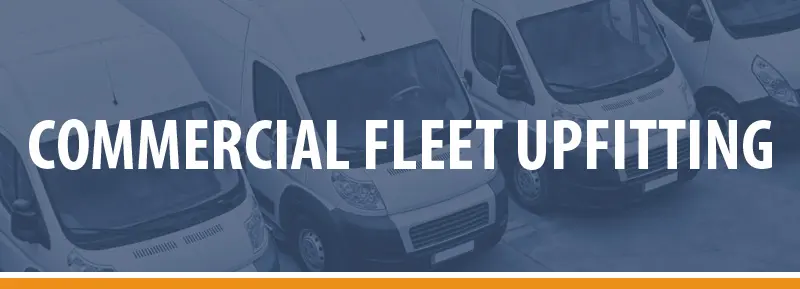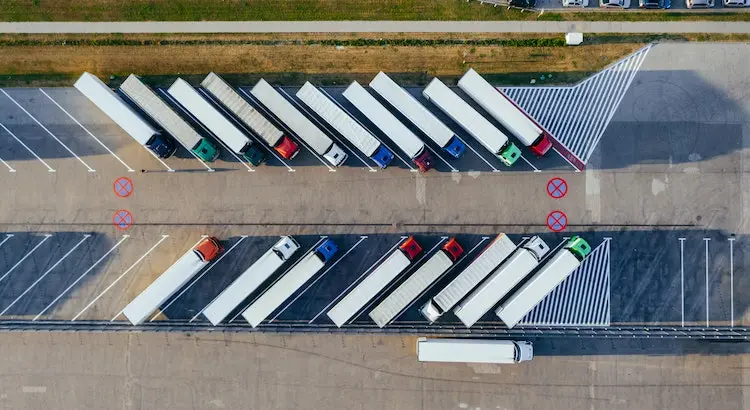In the competitive business landscape, companies relying on vehicle fleets continually search for opportunities to optimize their operations and cut expenses. Investing in commercial fleet upfitting, which refers to customizing a vehicle to meet specific business needs, can be a critical step in maximizing a company’s fleet’s ROI.
However, it’s essential to consider various financial implications, upfront and hidden costs, operational efficiencies, and the impact on branding and marketing before taking the plunge. This comprehensive article aims to elucidate these crucial areas to help you make a more informed decision.

The Financial Implications and Benefits of Commercial Upfitting
Whether you operate a small delivery business or a nationwide logistics firm, the correct type of vehicle customization can provide a competitive edge. Custom shelving or cargo management systems can maximize the usable space inside the vehicle. Consequently, this optimized use of space can mean more cargo transported per trip, fewer trips required, and ultimately lower operating costs.
Another essential aspect to note is the potential for increased employee productivity. Customized vehicles that cater to the work’s specific needs can decrease load and unload times. As the old saying goes, “Time is money.” When your employees spend less time dealing with vehicle inefficiencies, they have more time to focus on tasks that generate revenue.
It’s also vital to weigh the long-term value that upfitting can bring in terms of vehicle lifespan and reduced maintenance. Well-planned upfitting can distribute weight more evenly across the vehicle, lowering the wear and tear on individual components. Over the vehicle’s lifespan, this can amount to significant savings on maintenance and potential repairs, extending the vehicle’s useful life.
Strategic partnerships can further amplify the benefits of commercial upfitting. Collaborating with a reputable car and motorcycle transport company can be a game-changer. These companies often have extensive experience and expertise in maximizing fleet profitability. They can provide valuable insights into what types of upfits work best for particular transportation needs, helping you avoid common pitfalls.
Partnering with a car and motorcycle transport company can also provide opportunities for bulk purchasing and cost-effective customization options. The ability to transport multiple upfitted vehicles simultaneously can lead to economies of scale, significantly lowering the overall cost. As a result, you’ll get more value out of your investment, boosting your ROI considerably.
For businesses that handle specialized or delicate cargo, commercial upfitting can help ensure safer transportation. Whether installing refrigeration units for perishable goods or implementing advanced securing systems for heavy equipment, custom modifications can drastically reduce the risks associated with cargo transit. This safety improvement minimizes potential loss and adds value to your services, which can be a unique selling point for clients.
When calculating ROI, it’s essential to consider the impact of upfitting on fuel efficiency. Heavier modifications may affect the vehicle’s aerodynamics, thereby reducing fuel efficiency. However, the operational advantages and cost savings mentioned earlier often outweigh this negative aspect. Therefore, while it’s essential to consider fuel consumption, it should not be a standalone metric for determining ROI.
We should mention the potential for higher resale values. Customizations that are widely applicable or easily removed can make your vehicle more appealing to buyers in the secondary market. While the resale value may not be your primary concern, it’s still a favorable point to consider when evaluating the overall financial benefits of upfitting.

Upfront Costs: Investing in Quality Upfits
Upfitting a commercial vehicle fleet demands a considerable initial investment, and budgeting for this carefully is essential. Substandard or hastily done upfits may seem less costly upfront but are often less effective and durable, leading to increased costs. Quality upfits, on the other hand, while potentially more expensive initially, can offer lasting benefits that outweigh the costs.
Another consideration is the cost variance depending on the type of vehicle and the modifications needed. Lighter cars, such as sedans or small vans, will generally be cheaper to upfit than heavy trucks or specialized vehicles. Remember this while budgeting, and remember that not all upfits have to be comprehensive to be effective. Sometimes, even negligible, targeted changes can make a big difference.
One factor that businesses often overlook is the cost associated with downtime during the upfitting process. Time spent customizing is when the vehicle is not operational, impacting your bottom line. However, experienced upfitting partners can provide accurate timelines and may even offer expedited services for a premium.
Remember the costs associated with regulatory compliance. Any modifications you make must adhere to safety and emission standards, or you could face fines or legal ramifications. Researching and investing in compliant upfits from the outset can save you from unexpected and potentially significant expenses later.
Financing options are available to mitigate the immediate impact of the upfront costs. Leasing the upfit components, for instance, can spread out the expense over several months or years. However, you must weigh this against the long-term costs and benefits to ensure it aligns with your company’s financial strategy.
Investing in quality upfits from reputable suppliers can provide additional value through warranties or after-sales support. This assurance gives you peace of mind and enhances the longevity and reliability of your investment, positively affecting the ROI.
Also Read: The Technology Behind Electric Vehicles: How are EVs More Efficient?
The Hidden Costs of Inadequate Upfitting
Investing in inferior or incorrect upfits can lead to unexpected costs that harm your business in the long run. One such hidden price is decreased fuel efficiency. Ill-planned or poorly executed modifications can add weight or disrupt the vehicle’s aerodynamics, increasing fuel costs over time.
Another concern is the wear and tear on your vehicles. Poorly designed upfits can result in unequal weight distribution, stressing particular components and leading to premature failure. This increases maintenance costs and could mean that you’ll need to replace the vehicle sooner than expected.
Inadequate upfitting can negatively impact worker productivity. If the modifications adequately address the needs of the employees using the vehicles, you’ll gain out on one of the main benefits of upfitting in the first place. Time spent grappling with an inefficient setup can significantly hamper your operations and seriously handicap your fleet’s mobility.
The adverse effects on employee morale shouldn’t be underestimated either. Workers dealing with inconvenient or unsafe vehicle setups can become frustrated, leading to decreased job satisfaction and potentially higher turnover rates. In the long run, this can result in recruitment and training costs, impacting your bottom line indirectly.
Poorly executed upfits can affect your business reputation. If your vehicles are unsuitable for the job or result in frequent delays or service failures, it can severely harm customer perceptions of your company. This reputational damage can result in lost business opportunities, a hidden cost that can be devastating in the long run.
Here is a helpful list of pros and cons to consider when upfitting your fleet vehicles:
Pros
- Improved operational efficiency
- Increased vehicle lifespan
- Increased marketing opportunities
Cons
- Upfront costs
- Possible reduction in fuel efficiency

Operational Efficiencies: Faster, Better, Smarter
Optimizing your fleet through upfitting can create a ripple effect of efficiencies across various operational dimensions. One of the most immediate is the speed and ease with which your staff can complete their tasks. For instance, a well-designed storage system can make it easier for employees to locate and access tools or inventory, reducing time wasted searching for items.
Similarly, upfitting can improve the accuracy of your operations. Customized compartments for different types of goods can reduce the risk of errors during loading and unloading, saving time and resources. When the margin of error decreases, the potential for customer satisfaction and repeat business increases.
Technological enhancements, such as advanced GPS systems or route optimization software, can improve operational efficiencies. These technologies can provide real-time insights into vehicle locations, helping to optimize routes and reduce fuel consumption. Besides, they can contribute to better predictive maintenance by providing data on vehicle performance, thereby reducing downtime.
Adopting energy-efficient systems is another way upfitting can make your operations more intelligent. For example, installing solar panels or battery systems can offer an alternative energy source, reducing reliance on traditional fuels. This cuts down on operating costs and makes your fleet more sustainable, which is increasingly becoming a competitive advantage.
Investing in safety features can also contribute to operational efficiency by reducing the risk of accidents and the associated costs. This can range from advanced braking systems to in-cab cameras that monitor driver behavior. A safer fleet suits your bottom line and enhances your company’s reputation.
Efficiencies created by upfitting can also extend to administrative tasks. Customized billing or tracking systems can streamline the paperwork, saving employees time that can be better spent on revenue-generating activities. With the right upfit, you can automate many processes that consume valuable person-hours.
The Role of Upfitting in Branding and Marketing

Your fleet vehicles are more than just a means of transportation; they also move billboards for your business. Well-executed upfits can significantly contribute to your branding and marketing efforts. Custom paint jobs, logos, or decals can make your fleet instantly recognizable, increasing brand awareness wherever your vehicles go.
A neatly upfitted and well-maintained fleet sends a strong message about the professionalism and reliability of your business. It signals to customers and potential clients that you are committed to excellence and have invested in providing the best service possible. This can be a powerful tool in gaining a competitive edge.
Upfitting can also enable specialized marketing campaigns. For example, your upfitted vehicles can serve as mobile showrooms or demonstration units, allowing you to showcase your products or services at various locations. This not only maximizes the use of your fleet but also offers a unique and impactful way to reach your target audience.
In the age of social media, a creatively upfitted fleet can also become a viral sensation. Unique or eye-catching designs can encourage people to share images of your vehicles, providing free advertising. Even something as simple as a QR code on the side of the car can provide an easy way for potential customers to connect with your business.
In addition to the external branding benefits, internal branding should be noticed. Providing employees with vehicles that are upfitted to a high standard can instill a sense of pride and loyalty. This can translate into improved customer service, as employees who take pride in their company are likelier to go the extra mile in customer interactions.
Conclusion on ROI of Commercial Fleet Upfitting
Upfitting your commercial fleet is not a decision to be taken lightly. It requires a thorough evaluation of the financial implications, including upfront and hidden costs, and a detailed assessment of how the upgrades will impact your operations and marketing efforts.
However, the benefits can be immense when done correctly and strategically, ranging from operational efficiencies and increased employee productivity to enhanced branding opportunities. It’s a multi-faceted investment that can offer a considerable return, making it a viable and often essential move for businesses aiming to stay competitive in today’s fast-paced market.